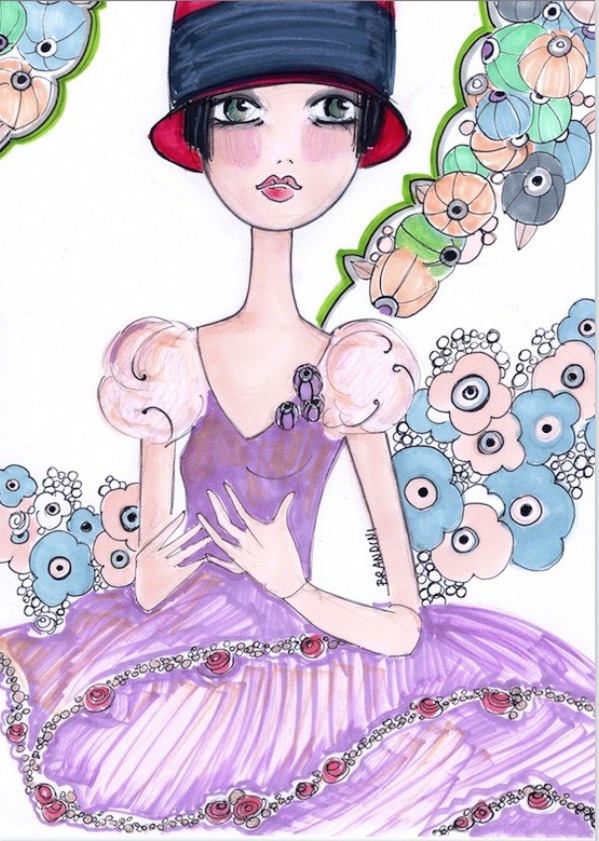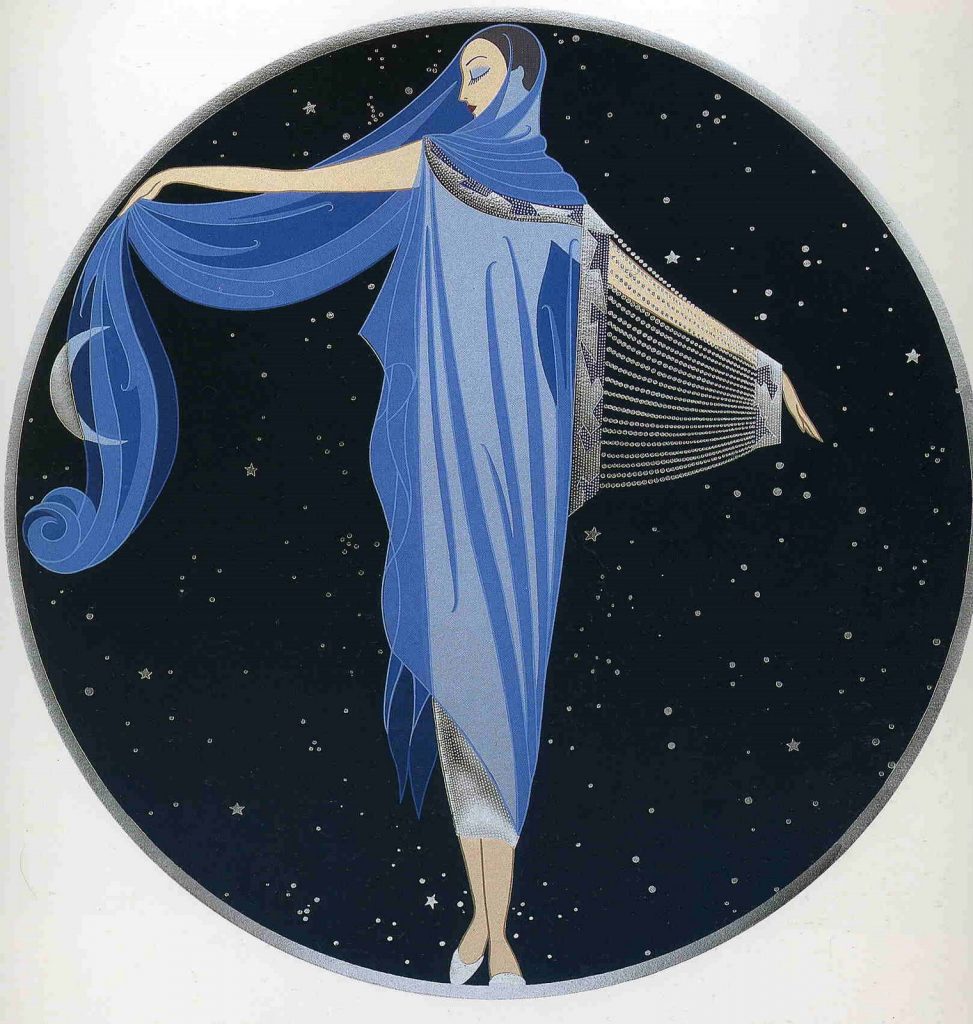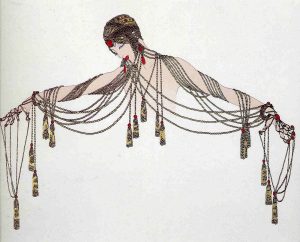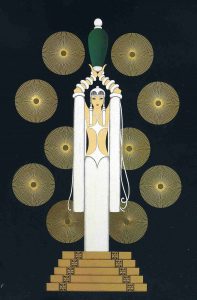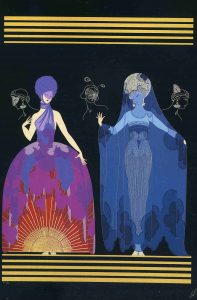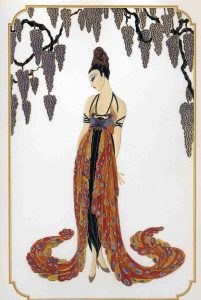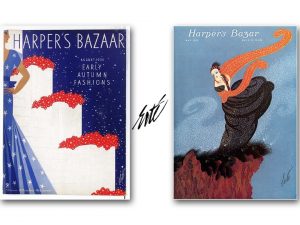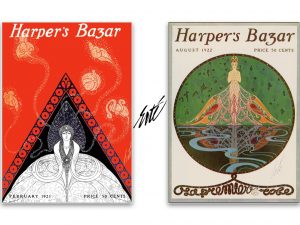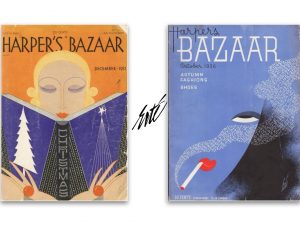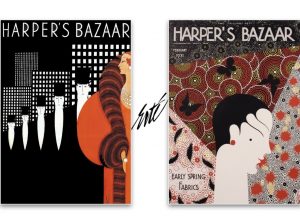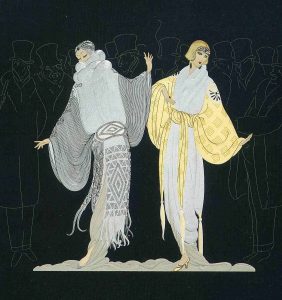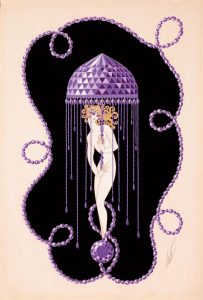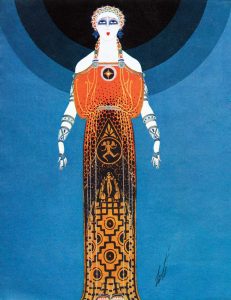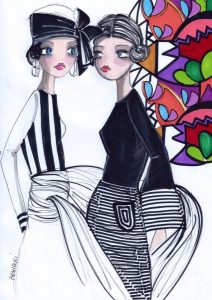“Lilian” by Beatrice Brandini
Drawing by Erté
Erté was a draftsman, an illustrator, a set designer, a theatrical costume designer, one of the greatest of the last century, the most important in the Déco era; author of wonderful feminine creatures with an unmistakable elegance.
Beautiful drawings by Erté
Romain de Tirtoff, alias Erté (from the French pronunciation of his initials), was born in Saint Petersburg in 1892, but already very small, despite a father admiral of the Russian fleet, he showed a marked artistic inclination, a fantasy that brought him to Paris in 1912, debuting as a designer, illustrator for Harper’s Bazaar, designer of clothes for theater and cinema.
Beautiful drawings by Erté
However the Parisian beginnings were not very easy. As soon as he arrived in the French capital, Erté found work at a small fashion house, “Caroline”, but after a little over a month the owner returned all the drawings to the young man, urging him to abandon the artistic path because he had no talent. Ertè didn’t give up, in fact, probably thanks to this disappointment, he put all his sketches inside an envelope and sent them to the most famous person in the fashion world in those years: Paul Poiret. Poiret immediately offered to work with him. The rest is history.
Erté and Poiret were among the first to understand female evolution in the 1900s, the first to propose a new aesthetic ideal. Poiret was also the first designer to collaborate with artists, Raoul Dufy designed fabrics for him for years.
Erté does not only design clothes, but oversees the entire creative process of Poiret’s workshop in the production of theatrical costumes. In 1914 Erté creates the entire wardrobe of Pierre Lou’s Aphrodite at the Renaissance Theater. He makes a lot of clothes for the most famous actresses of the time, like Joan Crawford, Lillian Gish, Norma Shearer, etc.
Beautiful drawings of Erté for the covers of Harper’s Bazaar
From 1915 he began his long and incredible professional collaboration with Harper’s Bazaar. From then on every month, for the next twenty years, the magazine included an illustration of Erté; it is estimated that he created 240 covers and about two thousand drawings for Bazaar. At the beginning he also illustrated for Vogue, but the owner of Harper’s Bazaar, media magnate William Randolph Hearst, offered the artist a long and important (20 years) exclusive contract that the artist could not refuse. This marvelous association was interrupted only because of the tyranny of a new director, who no longer allowed him to express himself freely. And we know that Erté has always been little inclined to compromises and limitations.
The magazine gave him a lot of visibility, even outside the French borders, making Erté very famous in America. The far-sighted and generous Hearst summed up their collaboration with this phrase: “What would have been Harper’s Bazaar if it hadn’t been for Erte?”
Beautiful drawings of Erté for the covers of Harper’s Bazaar
The fame of Erté, which became international, also took him to Hollywood. In fact in 1925 he was called by Louis B. Myer, head of Metro-Golden-Meyer. Despite this, Erté defined the unpleasant experience as the world of cinema was characterized by different realization times. Erté had to constantly redo the costumes to meet the needs of sometimes productions and hysterical actresses, thus convincing him to return to Europe.
Despite all this, even an artist as big as Erté, was forgotten for quite a long time, the darkness that affected his work can be dated to between the 40s and the 50s. It was rediscovered only in the sixties, when the master began to recreate the drawings of his youth in bronze and screen printing, but above all when the market approached the Art Déco. In 1987, at the age of ninety-five, Romain de Tirtoff was awarded the honorary medal for the hands of Jacques Chirac, a belated recognition that he deserved a long time ago.
Erté drawings
The aesthetics of Erté has always been characterized by exotic and orientalizing motifs, pervaded by influences from the history of art, as from the discovery of Tutankhamen’s tomb, an episode that greatly influenced him.
Many were the fortunate encounters that decreed the success of Erté, the one with the American opera singer Mary Garden who entrusted him with the creation of costumes for the work of Italo Montermezzi “The love of the three kings”, presented at La Scala and all ‘Opera of Chicago. Or like the one with Sergej Pavlovic Diaghilev, the director of the Russian ballet with whom he collaborated for a long time.
Erté drawings
All the drawings of this immense artist (it is estimated to be over 18,000), are authentic small works of art. Haste has never been his prerogative. For example, the series of the Alphabet, in which curved and straight lines become human figures, was very laborious, Erté, in fact, dedicated himself for thirty-eight years.
“The Twenties” by Beatrice Brandini
Erté you never changed style, regardless of the evolution of the countless artistic currents that characterized the twentieth century. The slanted almond-shaped eyes of oriental women, as well as the slender and elegant female figures, have become his stamp.
Erté has created a world of dreams in which we can simply lose ourselves.
Good life to everyone!
Beatrice


